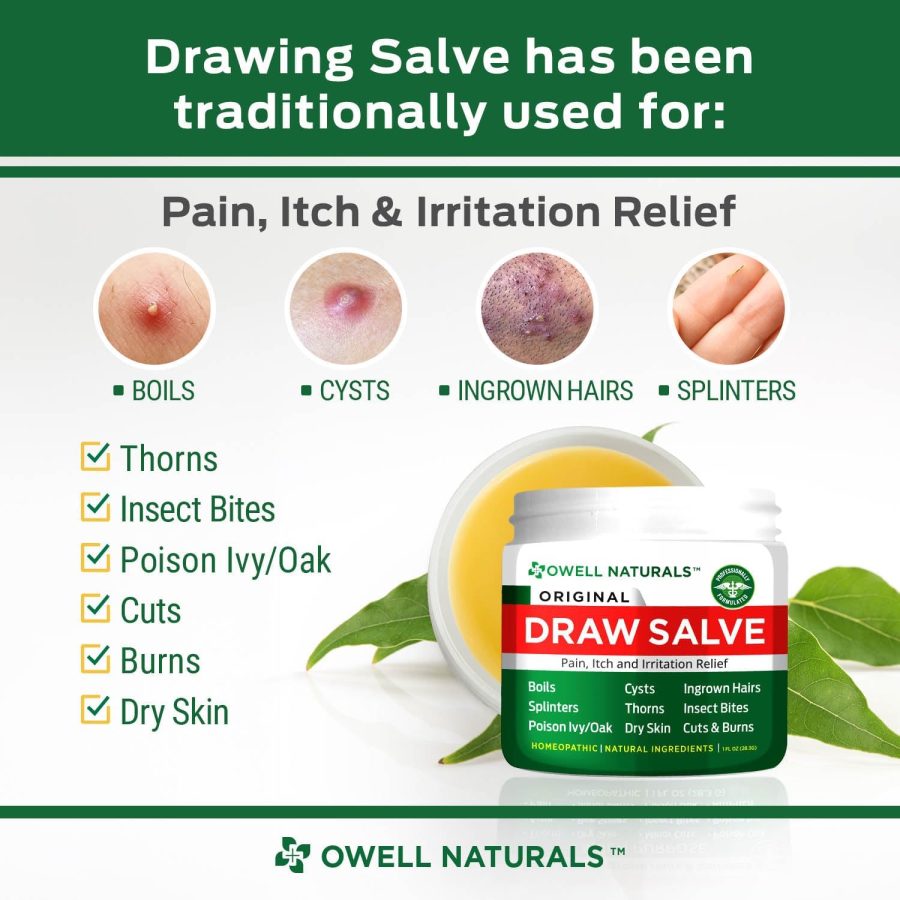For minor, surface-level skin discomforts, drawing salves are a traditional option people use to soften the area and support the body’s natural process of bringing impurities to the surface. This guide focuses on how to use OWELL Naturals Drawing Salve thoughtfully, when to pause, and how to buy with confidence.
View OWELL Naturals Drawing Salve on Amazon
What a drawing salve is
Drawing salves are topical ointments used on intact skin. They are not medications and should not be applied to open wounds. People use them to help soften the skin’s surface and support normal processes that may bring minor impurities outward. If symptoms are severe, spreading, or painful, prioritize professional care.
- Topical use: External application only on clean, dry, intact skin.
- Intended context: Minor, localized skin discomforts. Do not use for deep infections or systemic symptoms.
- Expectations: Gentle, gradual effects. Stop use if irritation occurs.
OWELL Naturals Drawing Salve at a glance
- Format: Ointment for external use.
- Use case: Applied to minor, surface-level skin irritations to soften the area.
- Application style: Thin layer under a clean bandage to help keep the area protected.
- Convenience: Simple routine; minimal mess when bandaged properly.
How to use it step by step
- Clean: Wash hands. Gently cleanse and dry the area. Do not puncture or squeeze boils or cysts.
- Patch test: Apply a small amount on another area of skin and wait 24 hours to check for irritation.
- Apply: Spread a thin layer over the intact skin where you intend to use it.
- Cover: Place a clean bandage or gauze over the ointment to reduce mess and protect the area.
- Refresh: Replace the bandage and reapply a thin layer every 8–12 hours as tolerated.
- Monitor: If redness spreads, pain worsens, fever appears, or the area looks infected, stop and seek professional care.
Smart buying checklist
- Clear labeling: Look for straightforward directions and external-use warnings.
- Ingredient transparency: Prefer products that list full ingredients and potential allergens.
- Packaging: Sealed container with tamper-evident features and a clear expiration date.
- Batch consistency: Brand reputation for consistent texture and scent.
- Use instructions: Easy-to-follow routine with bandaging guidance.
- Support: Access to customer service or a basic usage FAQ.
What to expect
- Timeline: Effects are gradual and depend on skin type and context.
- Sensation: Ointments can feel occlusive; bandaging helps keep the area comfortable.
- Cosmetic impact: Temporary residue is normal; keep clothing protected with a bandage or gauze.
Simple pairing and routine tips
- Hygiene: Gentle cleansing, clean hands, and fresh bandages are key.
- Comfort: Loose clothing reduces friction over the area.
- Avoid picking: Do not puncture or squeeze. This increases risk of infection and scarring.
Safety notes and when to pause
- Allergies: Review the ingredient list; stop use if burning, rash, or swelling occurs.
- Sensitive areas: Avoid eyes, mouth, nose, and any mucous membranes.
- Children and pregnancy: Seek professional guidance before use.
- Infection signs: Spreading redness, warmth, fever, drainage, or severe pain require professional assessment promptly.
This article is educational and not medical advice. Always consider your personal health context.
FAQs
Can a drawing salve remove a boil or cyst?
Topical products may support comfort for minor, surface-level concerns. They are not a substitute for professional treatment, and they should not be used to force drainage or puncture the skin.
How often should I reapply?
Many users reapply a thin layer and refresh the bandage every 8–12 hours. If irritation occurs, stop use.
Can I use it with other skincare?
Keep routines simple around the area to reduce irritation. Avoid harsh exfoliants or actives on the same spot.
How do I store it?
Keep it sealed, cool, and dry. Avoid heat and humidity to maintain texture.

